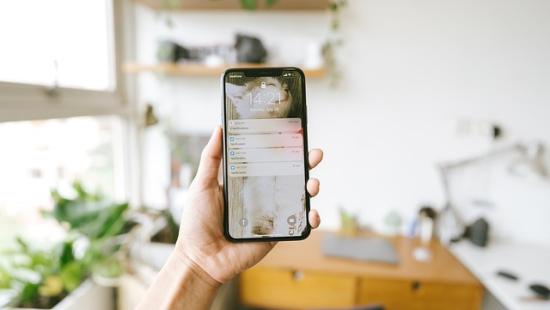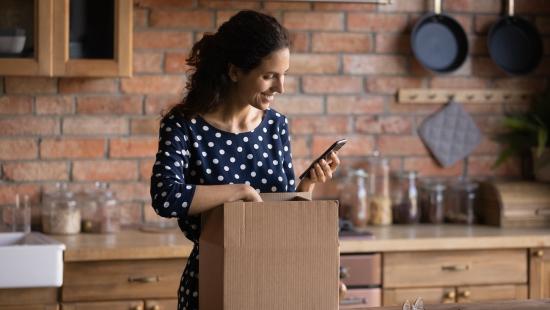7 Examples of Customer Engagement Strategies for Last-Mile Delivery
The landscape of last mile delivery has undergone a significant transformation, reshaping customer expectations along the way. In times marked by lockdowns and heightened concern over COVID transmission, customers rapidly embraced technologies enabling contactless experiences, such as remote ordering for takeout, groceries, and essential home supplies. This shift not only underscored the importance of visibility and communication but also left a lasting impact on customer expectations.
Today, even with most pandemic restrictions lifted, customers continue to demand transparency and immediacy in their interactions with their business providers. So, how can your business establish meaningful connections that align with these modern expectations? How can you continue to offer the safety, privacy, and convenience customers have come to expect and, in doing so, set your business apart in a competitive landscape?
In this article, we'll dive into seven examples of customer engagement strategies designed to build lasting relationships and elevate your brand.
1. Proactive Notifications
Sending order notifications on the day of a service or delivery is an effective way to stay connected with customers and ensure their availability. However, it's essential not to overlook the days leading up to the delivery. This window provides an excellent opportunity to send reminders and provide options for confirmation, rescheduling, or cancellation. By communicating in advance of the delivery day, you not only help customers prepare but also boost your first-time completion rates and reduce last-minute failures.
2. Status Alerts on the Delivery Day
On the day of a service or delivery, unexpected delays or order issues may arise. Keeping customers informed of these changes immediately, through their preferred communication channel (e.g., SMS, email, or messages via a customer portal), reduces the need for outbound calls from your support center and eases the burden on your customer service staff. Offering customers the ability to check their order status through a self-service portal goes a step further, providing valuable reassurance that their order is in progress and setting clear expectations.
3. Two-Way Communication Channels
Two-way communication is a powerful tool for engaging with customers and demonstrating that their needs are a priority. Customers can use this channel to relay specific requests, such as notifying drivers of potential delays in reaching the delivery location. Two-way chat also allows customers to share essential access information like gate codes, entry instructions, and suite information, reducing instances of denied access and freeing up drivers to serve more customers efficiently.
4. Real-Time Tracking
Many customers experience frustration on the day of a service or delivery and appreciate the ability to plan their day around their scheduled slot. Provide real-time tracking updates, allowing customers to monitor their position in the queue, track the location of their driver on a map, and access a link for two-way chat.
INDUSTRY WHITE PAPER
Best Practices for Last Mile Delivery
Company size has nothing to do with the ability to transform home/last mile delivery performance—it all starts with a different perspective and vision to turn delivery into a competitive weapon. Technology is an incredibly important enabler of world class delivery performance. Every best-in-class delivery company has 3 things in common. Download our Last Mile Delivery Best Practices eBook to see how you match up.
5. Transparent Driver Details
Effective communication includes providing customers with detailed information about the driver who will be arriving at their doorstep. Some customers may feel uneasy about opening their doors to strangers, so sharing driver information in advance can enhance their comfort level. Offer details such as a photo of the driver, their vehicle license number, credentials, and certifications. Ensure all this information is easily accessible through your self-service portal.
6. Provide Proof of Delivery
Proof of delivery (POD) is the process that creates documentation validating the receipt of goods by customers. Traditionally, POD involved obtaining customer signatures on physical documents. However, many delivery organizations have transitioned to electronic proof-of-delivery (ePOD) to help automate and streamline the documentation process. ePOD eliminates paperwork, capturing relevant data and images to verify the delivery of an order in its entirety and check for any damage.
7. Effective Feedback Collection
Feedback is a valuable means of communication with customers. After a service or delivery has been completed, automate a feedback survey to gather their input while their experience is fresh in their minds. Keep the survey simple and straightforward to encourage participation, and use the feedback to make improvements that address customer concerns and create more positive experiences. Digital feedback collection eliminates the need for in-person discussions with drivers or calling to your contact center, enabling immediate action on any issues. Additionally, offer customers the option to opt in or out of follow-up calls, reducing the reliance on third-party communications.
Engaging Your Customers for Long-Term Loyalty
Building lasting connections with customers ultimately hinges on effective and innovative communication. Given the high expectations customers hold, engagement throughout the entire order lifecycle, from initiation to the day of service and beyond, is indispensable.
Fleet Resource Center
Expand Your Routing, Mobile & Telematics Knowledge
Recommended For You



